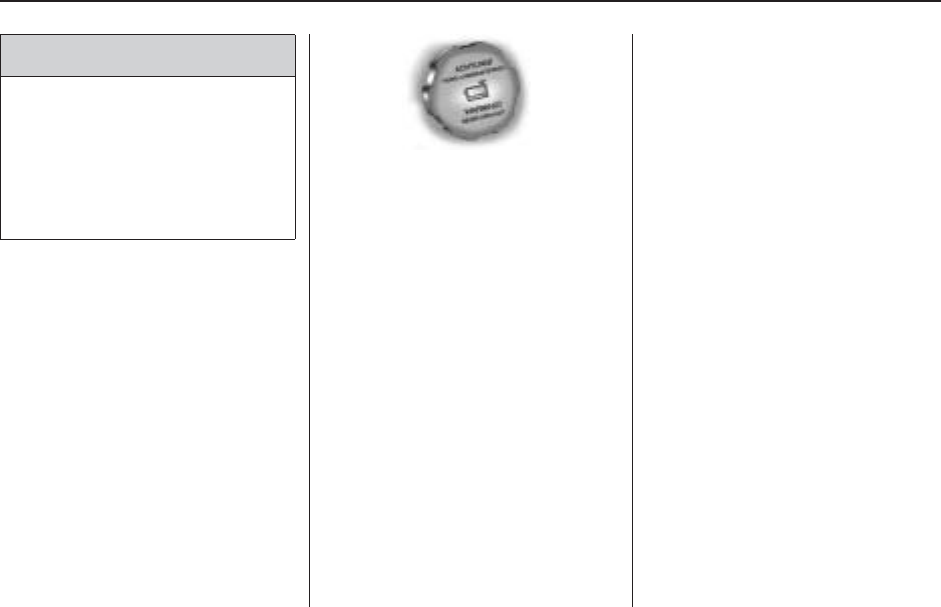
{ CAUTION
You can be burned if you spill
coolant on hot engine parts.
Coolant contains ethylene
glycol and it will burn if the
engine parts are hot enough.
Do not spill coolant on a hot
engine.
1. Remove the coolant reservoir
pressure cap when the cooling
system, including the coolant
reservoir pressure cap and
upper radiator hose, is no
longer hot. Turn the coolant
reservoir pressure cap slowly
counterclockwise about two
or two and one-half turns.
If you hear a hiss, wait for that
to stop. This will allow any
pressure still left to be vented
out the discharge hose.
2. Keep turning the coolant
reservoir pressure cap slowly,
and remove it.
3. Fill the coolant reservoir with
the proper mixture, to the
KALT/COLD mark. Wait about
five minutes, then check to
see if the level is below the
mark. If the level is below the
KALT/COLD mark, add additional
coolant to bring the level up to
the mark. Repeat this procedure
until the level remains constant
at the KALT/COLD mark for
at least five minutes.
4. With the coolant reservoir
pressure cap off, start the
engine and let it run until you
can feel the upper radiator hose
getting hot. Watch out for the
engine cooling fans.
By this time, the coolant level
inside the coolant reservoir might
be lower. If the level is lower
than the KALT/COLD mark,
add more of the proper mixture
to the coolant reservoir until
the level reaches the
KALT/COLD mark.
5. Replace the coolant reservoir
pressure cap. Be sure the
pressure cap is hand-tight and
fully seated.
Coolant Reservoir
Pressure Cap
Vehicle Service and Care 9-19


















